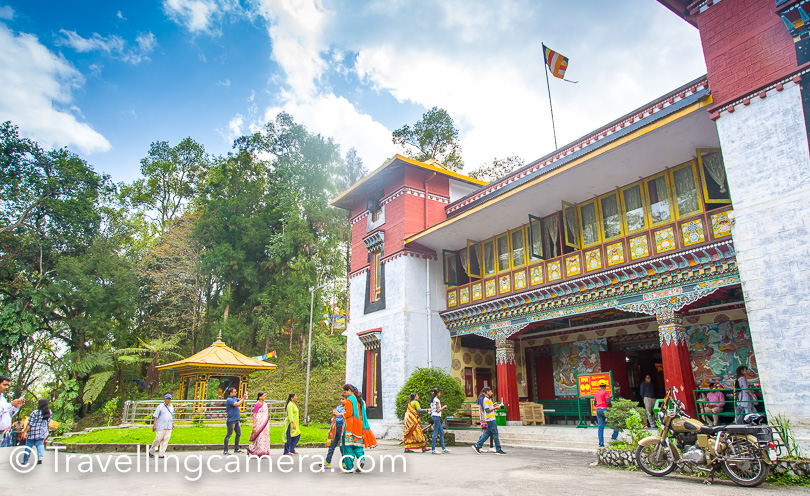 The title of this post doesn't do this place justice. The institute is so much more than a beautiful building. Set a little off the road, the Namgyal Institute of Tibetology is surrounded by trees and mountains. Under deep blue skies, this red and white building stands out gracefully and yet merges perfectly with the natural surroundings.
The title of this post doesn't do this place justice. The institute is so much more than a beautiful building. Set a little off the road, the Namgyal Institute of Tibetology is surrounded by trees and mountains. Under deep blue skies, this red and white building stands out gracefully and yet merges perfectly with the natural surroundings.
The institute was established in 1958 and since then has been sponsoring research in religion, art, culture, history, and language of the people of Tibet. The institute publishes the Bulletin of Tibetology, which it has been doing since 1964, and has also published several other books related to Tibetology. The institute also has one of the largest collection of Tibetan works in the world. And apart from all this, the institute also houses a museum of Tibetan iconography and religious art. It is hard to believe that so much happens in such a small building.
One look at the exteriors and I estimated that it wouldn't take more than 10 minutes to explore the place. But it turned out that I would end up spending more than an hour there, reading about each and every exhibit in the museum. There were ancient manuscripts in Sanskrit, Tibetan, Chinese, and Lepcha. There were scultures, and icons of Bodhisattvas. Some of the rarest relics of Tibetan history can be found in this museum.
This place is great if you want to do some serious research on Tibet and its culture. The texts are extensive and the museum itself tells you a lot about Tibetan Culture. Apart from this there are two libraries where visitors can reference informative, even rare, texts. One can't issue books, but can spend the entire day at the library and even make copies of extracts from all books, except the ones that are rare.
After spending about an hour inside the museum, we came out and sat on the verandah. It was wonderful to see people pouring into the museum. Not all of them were interested in looking at the displays though. I guess, it is this way with museums anywhere - you cannot force people to take interest in them. Personally I feel, museums are a great source of knowledge, and I do not remember even a single museum that hasn't interested me. I have been to art museums, science museums, money museums, religious museums, natural history museums, mountaineering museums, and I am yet to find one that did not interest me.
Religion in itself doesn't interest me much, but when coupled with history and culture of a place, there's hardly anything more interesting. Buddhism and Tibetan culture fascinate me a lot, though there is a large part of it that I don't yet understand. May be with places like Namgyal Institute of Tibetology, curious people like me can find a source of information that is easily accessible. It is just a matter of finding time to study about it.
If you liked this post and found it helpful, I would request you to follow these things when traveling -
1. Manage your waste well and don’t litter Use dustbins.
2. Tell us if you went to a place and found it hard to locate a dustbin.
3. Avoid bottle waters in hills. Usually you get clean water in hills and water bottles create lot of mess in our ecosystem.
4. Say big no to plastic and avoid those unhealthy snacks packed in plastic bags. Rather buy fruits.
5. Don't play loud blaring music in forests of jungle camps. You are a guest in that ecosystem and disturbing the locals (humans and animals) is not polite






.jpg)
Comments